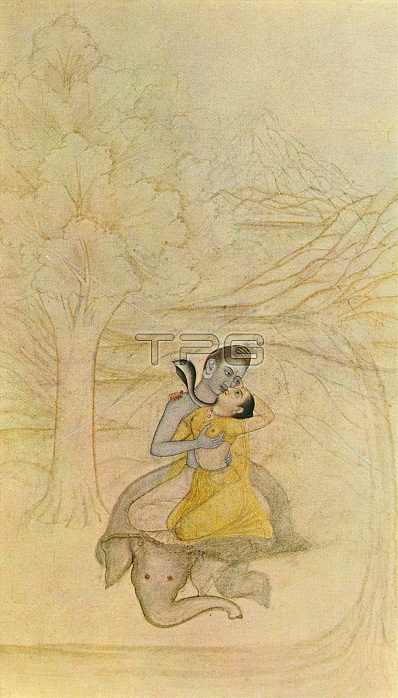
Indian painting has a very long tradition and history in Indian art. The earliest Indian paintings were the rock paintings of pre-historic times, the petroglyphs as found in places like Bhimbetka, some of them from before 5500 BC. India's Buddhist literature is replete with examples of texts which describe palaces of kings and the aristocratic class embellished with paintings, but the paintings of the Ajanta Caves are the most significant of the few survivals.
Smaller scale painting in manuscripts was probably also practised in this period, though the earliest survivals are from the medieval period. Mughal painting represented a fusion of the Persian miniature with older Indian traditions, and from the 17th century its style was diffused across Indian princely courts of all religions, each developing a local style. Company paintings were made for British clients under the British raj, which from the 19th century also introduced art schools along Western lines, leading to modern Indian painting, which is increasingly returning to its Indian routes.
Indian paintings provide an aesthetic continuum that extends from the early civilization to the present day. From being essentially religious in purpose in the beginning, Indian painting has evolved over the years to become a fusion of various cultures and traditions.
| px | px | dpi | = | cm | x | cm | = | MB |
Details
Creative#:
TPG32695913
Source:
達志影像
Authorization Type:
RF
Release Information:
須由TPG 完整授權
Model Release:
No
Property Release:
No
Right to Privacy:
No
Same folder images:

 Loading
Loading